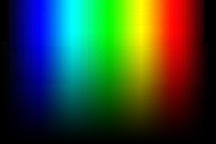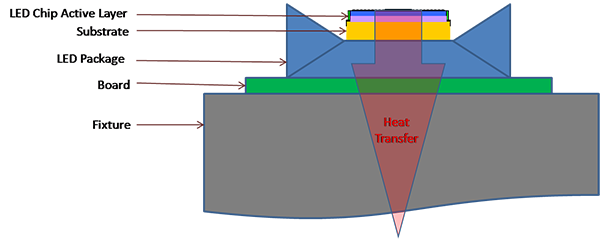LED Technology Information

Lifespan
The cornerstone of the technological advancements in LED Lighting are attributed to the efficiency, lifespan and quality of light LEDs produce. Where traditional methods of lighting are inefficient and produce wasted energy in the form of heat. LED Lighting excels at using a very minimal energy and turning it into an amazing amount of light, thus, creating efficiencies that far exceed any other form of lighting in the market today. LEDs are quickly becoming mainstream because of their undeniable benefits over more traditional forms of lighting available:
- Long lifespan
- Low heat
- Excellent colour
- Simple to install
LEDs lifespan ranges from 25,000 hours to 100,000 hours depending on the type of LED technology used and how hard the LEDs are driven.
Color quality and light control
LEDs have a superior ability to emit a wide variety of color temperatures. They consistently distribute light without the use of filters or gels to distort color temperature. LEDs require a coating to be applied to each diode individually. This coating creates color consistency which is vital to achieving the desired color temperature. There are many different types of LED chips available in the market today-- 5mm LED, SMD LED, Power LED & COB LED. Each type of LED serves a specific purpose and can be utilized in manufacturing many different types of bulbs & fixtures.
LEDs also have a superior ability to control the angle at which light is directed, and can also operate on standard dimmers.
Color temperature - LEDs are available in 2600K - 7000K + Red, Green, Blue, Yellow and many custom color's.

Voltage regulation - Vital for long lifespan
The term voltage regulation simply means that the bulb can handle fluctuations from the power source. Electricity has a tendency to fluctuate daily and can potentially cause harm to all electrical devices if not properly protected. Voltage regulation is crucial to the lifespan of LED Lighting. When a bulb or lamp is not properly regulated and the power surges, it can cause irreparable damage to the bulb or lamp. Voltage regulation simply protects the LEDs, circuitry and components from unnecessary harm.
11-15VDC
10-30V DC
100 -120V AC
The Voltages above demonstrate the range of electrical fluctuation a specific bulb can handle.
Durability
The term Solid State Lighting is the catalyst behind the durability of LED Lighting. With no filaments to break or burn out, LEDs will withstand electrical fluctuations, shock, vibration and day to day wear, they will also operate in extreme environments from -40°C to +60°C.
For many owners of Recreational vehicles or Yachts, the vibration from the engine, road, ocean or other environmental element often shortens the life of traditional lighting. LED Lighting has stood the test of time in electronic devices and is quickly becoming the consumer's choice for efficient illumination.

Thermal Management
LEDs will only reach their potential lifespan if they are properly thermally managed, heat needs to be dissipated efficiently and effectively away from the LEDs. Advancements in the LED chip will allow for extended lifespan as long as the product is thermally managed correctly. SMD LEDs are already achieving never before seen luminous efficacies.

Benefits of LEDs
Cost Savings
- Energy efficiency
- Long lifespan +25,000 - 100,000 hours
- Reduced maintenance and replacement bulb labor costs
- Less heat
Reduce Environmental Impact
- Earth Friendly (no mercury or harmful gases)
- Long Lifespan - less bulbs replaced
- Energy efficient
Additional Benefits
- Simple to install (direct replacement for incandescent, CFL & Halogen)
- Safer, no burns when light is touched
- Lights instantly (no warm up period like CFLs)
- Silent operation
- Won't cause migraines like CFLs
- Produce enhanced lighting colors conducive to alertness
- No RF wavelengths emitted to interfere with radio frequency
- No UV or IR

